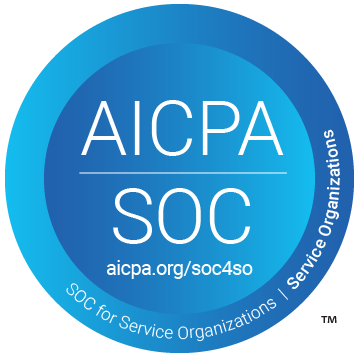From intent-based content personalization to measuring ROI, data plays a critical role in all aspects of marketing today. However, marketers often face the dilemma of deciding whether to buy consumer data or spend their budget on gathering more first-party data to drive their campaigns. If you can relate, this guide is for you!
Before we dive in, let’s first say that there’s no straightforward answer here. There are many factors to consider – and ultimately it will depend on your marketing objectives!
Keen to solve your data doubts ASAP? Then book a demo with a Speedeon data expert.
Types of Customer Data
First-Party Data
This is data you gather directly from your customers from different sources and channels. This can be your customers’ purchase history, basket size, interactions on social media, or details they provide consensually.
Second-Party Data
This is another company’s first-party data shared with you. It often happens when firms collaborate to share data based on a mutual agreement. By accessing another set of data in addition to yours, more consumer insights can be uncovered.
Third-party data
External datasets bought from data solution providers like Speedeon fall under this category. Third-party data comes from aggregated datasets gathered from several sources and can be customized to suit your requirements.
Now, let’s take a look at the pros and cons of relying solely on one type of data!
Pros and Cons of Gathering First-Party Data
Data collected directly from customers is a powerful asset. Here’s why.
Pro: Relevant and Accurate
There’s no better source than first-party data to learn about your customers and the prospects you are attracting. It is highly relevant and gives you accurate insights into your customers’ preferences and behaviors. If you have abundant first-party data, it is a rich source to create highly personalized and targeted marketing campaigns to increase retention.
Pro: More Control
As you have exclusive ownership over the data gathered, you can determine how it will be managed and used. It also gives you a competitive advantage, as no one else is privy to your insights. You can use it repetitively to implement different strategies.
Pro: Free of Legal Concerns
First-party data is gathered in compliance with privacy regulations and with your customer’s consent. So you don’t have to worry about legal complications. As it’s a more transparent way of using data, customer trust and loyalty will also improve.
But, first-party data has its limitations.
Cons: Limited Scale
The number #1 con of first party data is actually limited scale. Limited scale means that fewer consumers are represented. If you have 1% of the population, it means 99% is still out there and, if your strategies are limited to first party only, they remain unreached.
Cons: Limited insights
This speaks to what you know about the customer. You may have a nice robust customer list, but you are limited in what you know about them. For example, you may know that they purchased a baseball hat. But is it because they play ball, are a fan, or is it neither and it was a gift? Without additional data points, the story is incomplete.
Cons: Time and resource-consuming
Without the right tools, technologies, and expertise, gathering, storing, maintaining, and using the data can be a huge challenge. It is a big investment on your part and you need to ensure you comply with the relevant regulations. Moreover, it’s a slow process and may take years to build a robust dataset.
Pros and Cons of Buying Third-Party Data?
Today, many firms go with buying consumer data for marketing because it offers many benefits.
Pro: Valuable Customer Insights
Third-party data is gathered from a variety of sources. It offers rich insights, covering a broad range of demographics, interests, and behaviors. This allows marketers to gain a comprehensive view of their customers and design campaigns accordingly.
Pro: Ready to Use
Reputed data vendors ensure that the datasets they provide are at par with the industry standards. The data is cleaned, updated, and categorized by customer types and other attributes to help you filter and obtain what you need. If you want to target a specific demographic or market, you can also get custom data solutions, or use a data audience platform to create your perfect audience.
Pro: Easier to Scale
Using third-party data, you can amp up your marketing campaigns and reach a wide audience. You can tap into new segments as well. This means you can increase your lead conversion and customer acquisition rates faster than with first-party data.
But, even buying consumer data from vendors comes with challenges.

Con: Lack of Granularity
Since it’s not gathered directly from your customers, it might not fully align with your target audience or business needs. In this regard, you need to consult with the provider beforehand and explain your needs to get a customized solution.
Let’s circle back to our previous example – knowing that a customer on your list purchased a baseball hat. So, your provider may not know the person on the list bought a ballcap on a specific date. But, what they would know is that the person may have a higher level of interest is apparel. What we mean here is that the data can be accurate, just not 100% specific.
Con: Privacy and Compliance Concerns
An often overlooked drawback is that third-party data may come with legal risks. If the provider hasn’t collected it ethically or with proper consent, using it could lead to compliance issues and damage brand trust. This is why it’s important to license data from trusted vendors.
Con: Your Competitors Can Access and Use this Data – Hence, Why You REALLY Need It
This is a double-edged sword. While it’s true your competitors can access and use this data – meaning it may not give you a competitive advantage – that also means that if you don’t buy it, you’d risk missing out on those prospects.
Define Your Data Strategy: When to Purchase Consumer Data
Despite the many benefits first-party data offers, many companies, especially startups, don’t have the luxury of an extensive first-party data pool. Even if you are focused on gathering it as you go, it can be time-consuming and may not help businesses scale faster. So, buying consumer data is recommended if;
- Your brand is up and coming and needs some data-driven leverage for better customer acquisition and retention. Partnering with a data solutions provider like Speedeon can help you access high-quality segmented datasets that will let you target in-market clients.
- You are looking to enrich your first-party data with external datasets for more context and background information on high-value clients. This is particularly valuable if you want to enhance your existing customer profiles and build more personalized campaigns using your first-party list.
- First-party data collection is no easy feat. It is a costly and resource-heavy task that’s often not feasible for low-budget marketing teams. This is because you need a robust data-collection system to leverage the benefits of the data gathered while complying with the regulations. In this case, it is more affordable to buy third-party consumer data.
- If you want to target new audience segments to expand your reach and acquire new customers, third-party data can power up your campaigns. It helps you test new markets and see how your brand resonates with those audiences. With targeted solutions like new mover data, or life event data, Speedeon can help you reach high-converting clients who are in the market and ready to buy!
Integrating Both First Party and Third Party Data for Maximum Impact
Ultimately, we all want to see results! All marketers want their campaigns to perform well and deliver a better return on investment. This means, we have to maximize the impact of the data available!
At Speedeon, we recommend our clients take advantage of both types of data. First-party data gives you the much-needed insights to create relevant marketing messages and attractive offers. External data can help you fill gaps in understanding the customers and make the task easier. It will also help you tap into new markets and reach new audiences!
Using both improves the precision in targeting and reduces wasted ad spend.
Top FAQs on First-Party and Third-Party Data for U.S. Audiences
Is It Legal to Buy third-Party Data in the U.S.?
Yes! Buying third-party data is totally legal in the U.S., but brands need to be smart about it:
- Ensure your data provider follows U.S. privacy laws like the CCPA (California Consumer Privacy Act).
- Check that the data was collected in an ethical and compliant way.
- Keep data secure by using privacy and data security friendly methods that reduce data movement, and data access.
- Stay up to date with changing state laws to avoid compliance issues.
What’s the Best Way to Combine First-Party and Third-Party Data?
- Use third-party data to fill in the gaps – like adding demographics or buying signals to your customer profiles.
- Match anonymous website visitors with known customer data to improve retargeting.
- Use third-party data to find more prospects that look like your current best customers.
It helps you reach the right people at the right time by:
- Expanding your reach to potential customers outside your current audience.
- Personalizing ads based on real consumer behaviors and interests.
- Predicting who’s most likely to buy so you can focus your budget where it counts.
Get the Data You are Looking For
If you are looking for a trusted partner to outsource all your data requirements and improve your marketing efforts and sales, Speedeon’s solutions can take you in the right direction! Our consumer data is verified, updated, accurate, and designed to give you the best insights. Book a consultation with us today!

